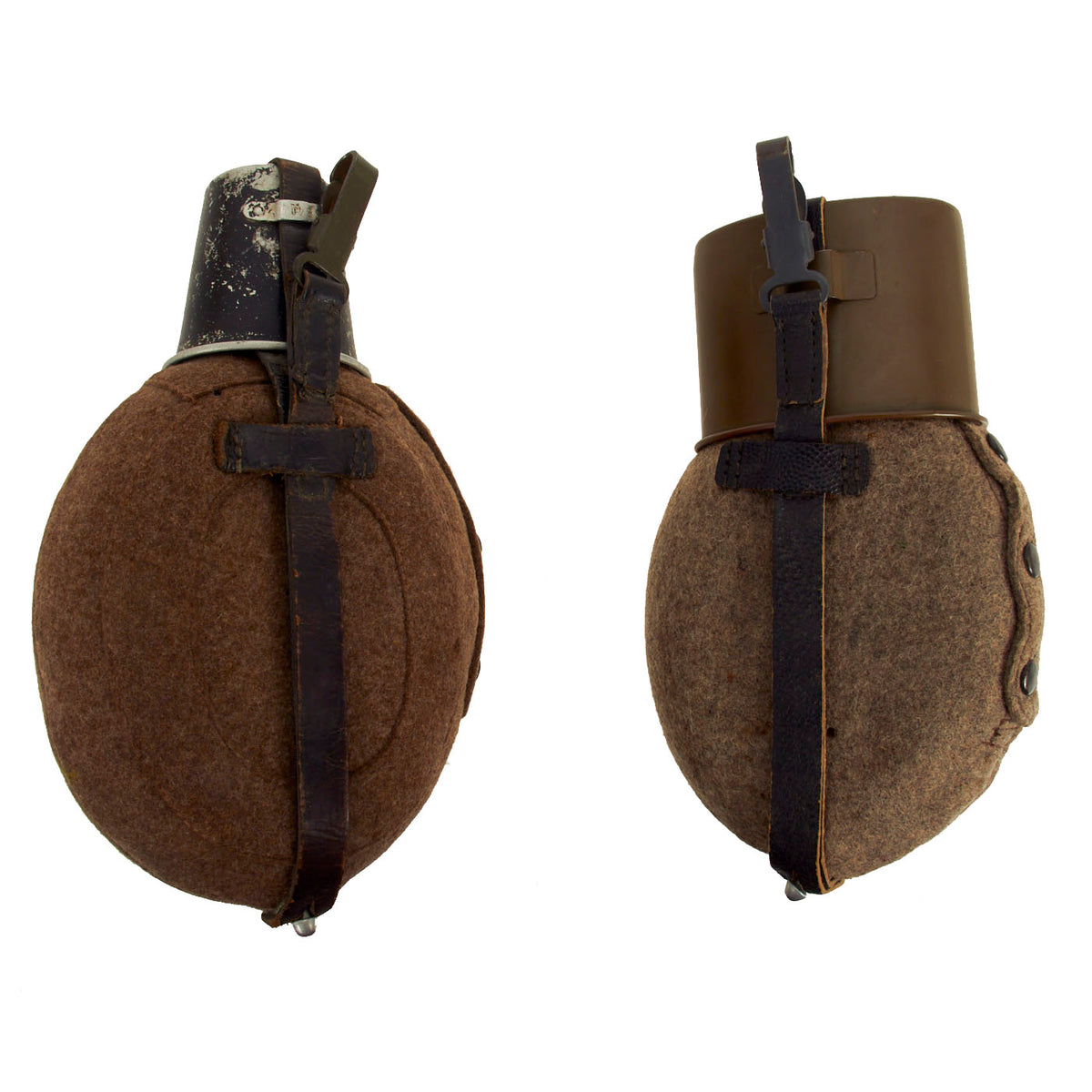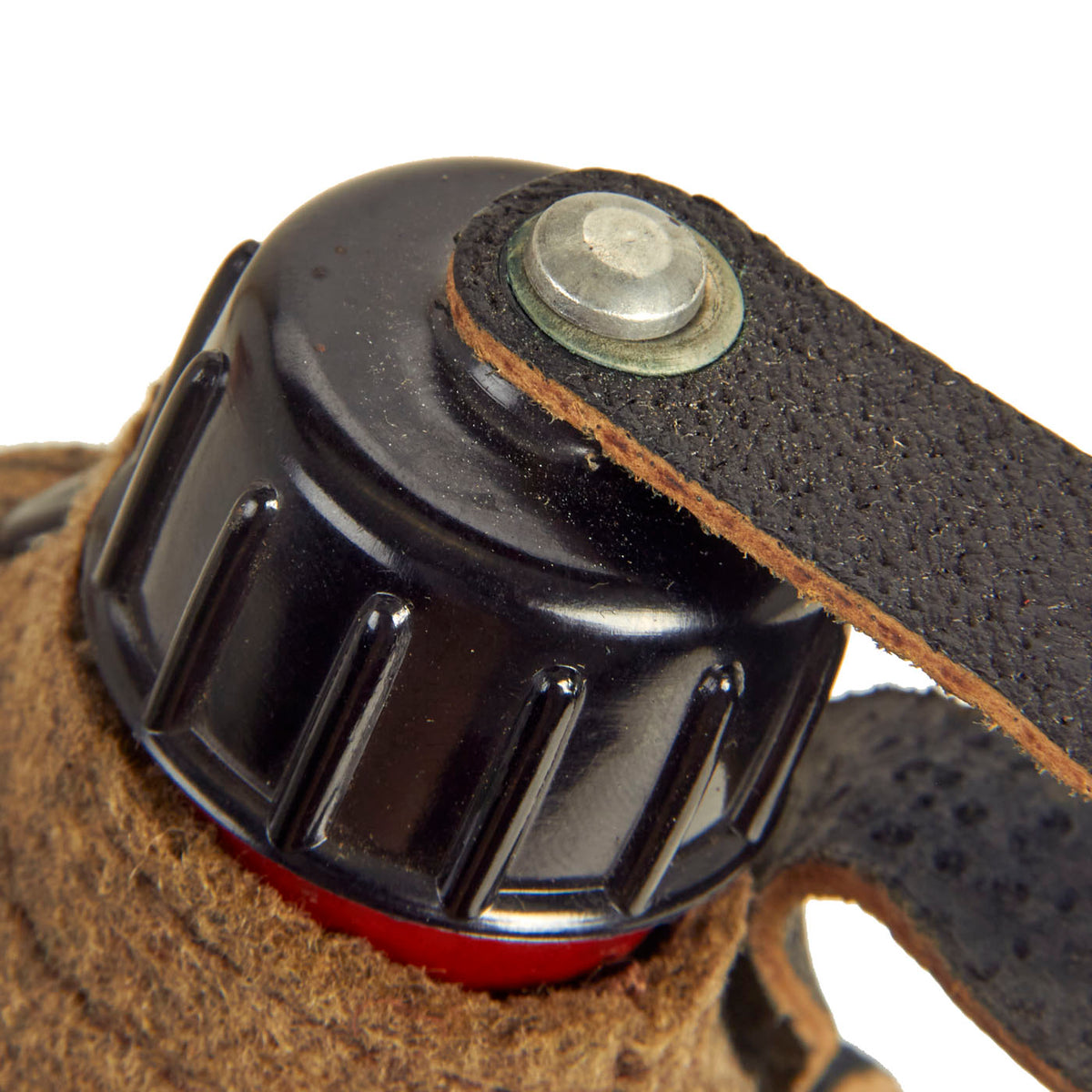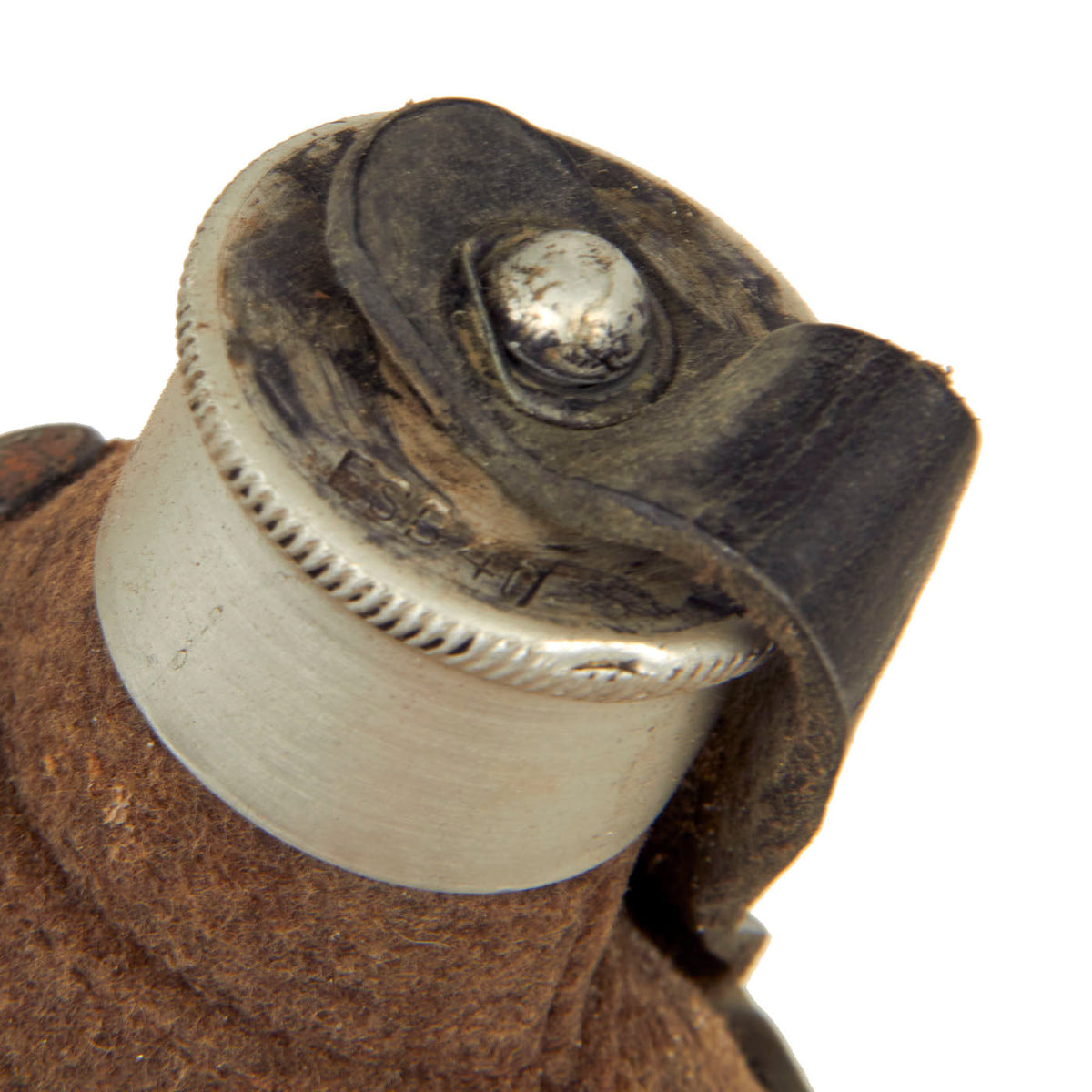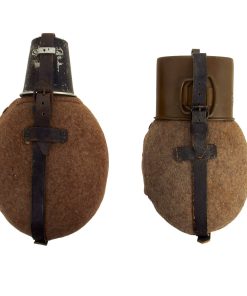Original German WWII Lot of 2 M31 Canteen Rigs – Aluminum with Small Cup and Steel with Large Cup Original Items
$ 355,00 $ 106,50
Original Item: Only One Set of Two Available. These are two very nice German WWII Issue M31 canteen water bottle rigs, with one representing the typical early war (circa 1940) configuration, and the other the late war (circa 1943) configuration. Material shortages during the war, particularly related to the supply of aluminum, led the M-31 to change over the war, first with the cup getting larger, and then being replaced with an enameled steel variant. The main canteen vessel itself was then replaced with enameled steel, and the two example we have here represent the end points in this change.
Both come complete with their felt covers, leather harnesses and cups, and as far as we can tell are fully functional. We were able to get the cups off both examples, as the leather is still supple on both.
The early war example has most components marked ESB 40, indicating 1940 production by Eduard Sommerfeld of Berlin. During the war the makers of canteens and mess kits did not use the three letter code system, instead using an abbreviation. It has an aluminum bottle, screw cap, and small cup, all of which show some great period wear. The washer inside the cap is still intact, and all of the snaps on the cover are present, though some are rusted. The leather harness does show wear, but the buckle and snap are still functional, with no tears through the leather.
The later war example has the cover, harness, and cup marked C.F.L. 43, for 1943 production by Carl Feldhaus Aluminium-und Metallwerke of Lüdenscheid. It features an enameled steel body with a bakelite cap, and a large steel cup. The cap and canteen body have no markings, but we assume that they were also made by the same maker, as the condition is pretty much UNISSUED. There is very little service wear of any kind, with great enamel on the metal components, and solid leather.
A great German Canteen set, showing the way Germany was able to adapt to aluminum shortages as the war continued. Ready to display!
Canteen (bottle)
A canteen is a reusable drinking water bottle designed to be used by hikers, campers, soldiers, bush firefighters (including non-potable water), and workers in the field in the early 1800s. It is usually fitted with a shoulder strap or means for fastening it to a belt, and may be covered with a cloth bag and padding to protect the bottle and insulate the contents. If the padding is soaked with water, evaporative cooling can help keep the contents of the bottle cool. Many canteens also include a nested canteen cup.
Primitive canteens were sometimes made of hollowed-out gourds, such as a calabash, or were bags made of leather.
Later, canteens consisted of a glass bottle in a woven basket cover. The bottle was usually closed with a cork stopper.
Designs of the mid-1900s were made of metal — tin-plated steel, stainless steel or aluminum — with a screw cap, the cap frequently being secured to the bottleneck with a short chain or strap to prevent loosening. These were an improvement over glass bottles, but were subject to developing pinhole leaks if dented, dropped or bumped against jagged rocks.
Contemporary designs are almost exclusively made of plastic, especially polyethylene or polycarbonate. They are typically as light as, or lighter than, their metal equivalents and are quite resistant to developing leaks, even when dropped or severely bumped.
Hunter-gatherers in the Kalahari used ostrich eggshells as water containers, puncturing a hole in them to enable them to be used as canteens. The presence of such eggshells dating from the Howiesons Poort period of the Middle Stone Age at Diepkloof Rock Shelter in South Africa suggests canteens were used by humans as early as 60,000 years ago.
Fast Shipping with Professional Packaging
Thanks to our longstanding association with UPS FedEx DHL, and other major international carriers, we are able to provide a range of shipping options. Our warehouse staff is expertly trained and will wrap your products according to our exact and precise specifications. Prior to shipping, your goods will be thoroughly examined and securely secured. We ship to thousands clients each day across multiple countries. This shows how we're dedicated to be the largest retailer on the internet. Warehouses and distribution centres can be located throughout Europe as well as the USA.
Note: Orders with more than one item will be assigned a processing date depending on the item.
Before shipping before shipping, we'll conduct a thorough inspection of the items you have ordered. Today, the majority of orders will be delivered within 48 hours. The delivery time will be between 3-7 days.
Returns
The stock is dynamic and we cannot completely manage it because multiple stakeholders are involved, including our factory and warehouse. So the actual stock may alter at any time. It's possible that you may not receive your order once the order has been made.
Our policy is valid for a period of 30 days. If you don't receive the product within 30 days, we are not able to issue a refund or an exchange.
You can only return an item if it is unused and in the same state as the day you received it. You must have the item in its original packaging.
Related products
Uncategorized
Uncategorized
Uncategorized
Band of Brothers ORIGINAL GERMAN WWII Le. F.H. 18 10.5cm ARTILLERY PIECE Original Items
Uncategorized
Uncategorized
Uncategorized
Uncategorized
Uncategorized
Uncategorized
Uncategorized
Uncategorized
Uncategorized
Uncategorized
Angolan Rebel 1970s era 60mm Inert Display Mortar from Angolan Civil War Original Items
Uncategorized
Uncategorized
Uncategorized













































































